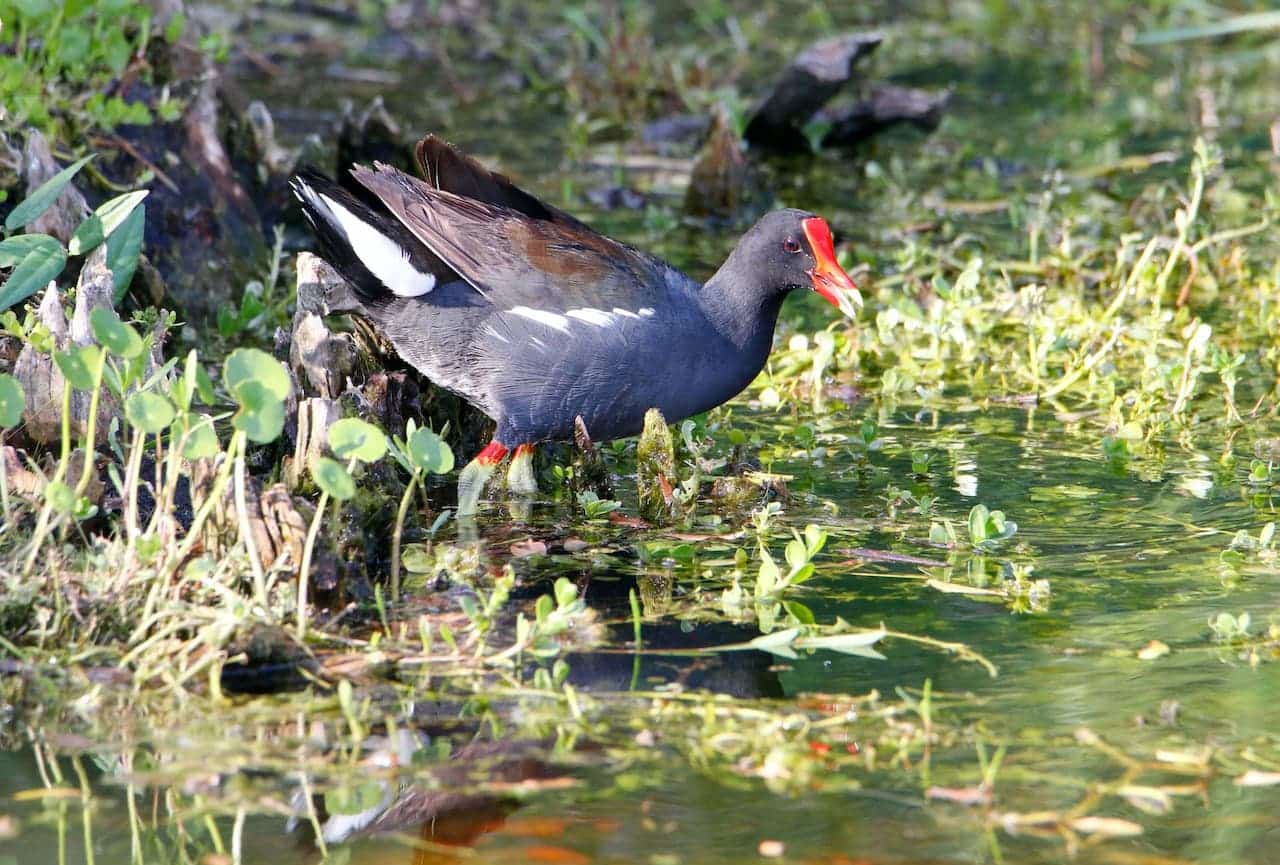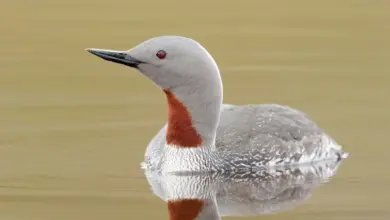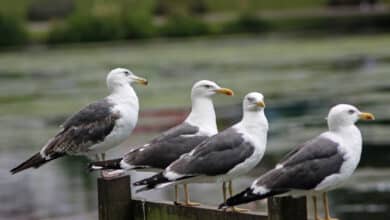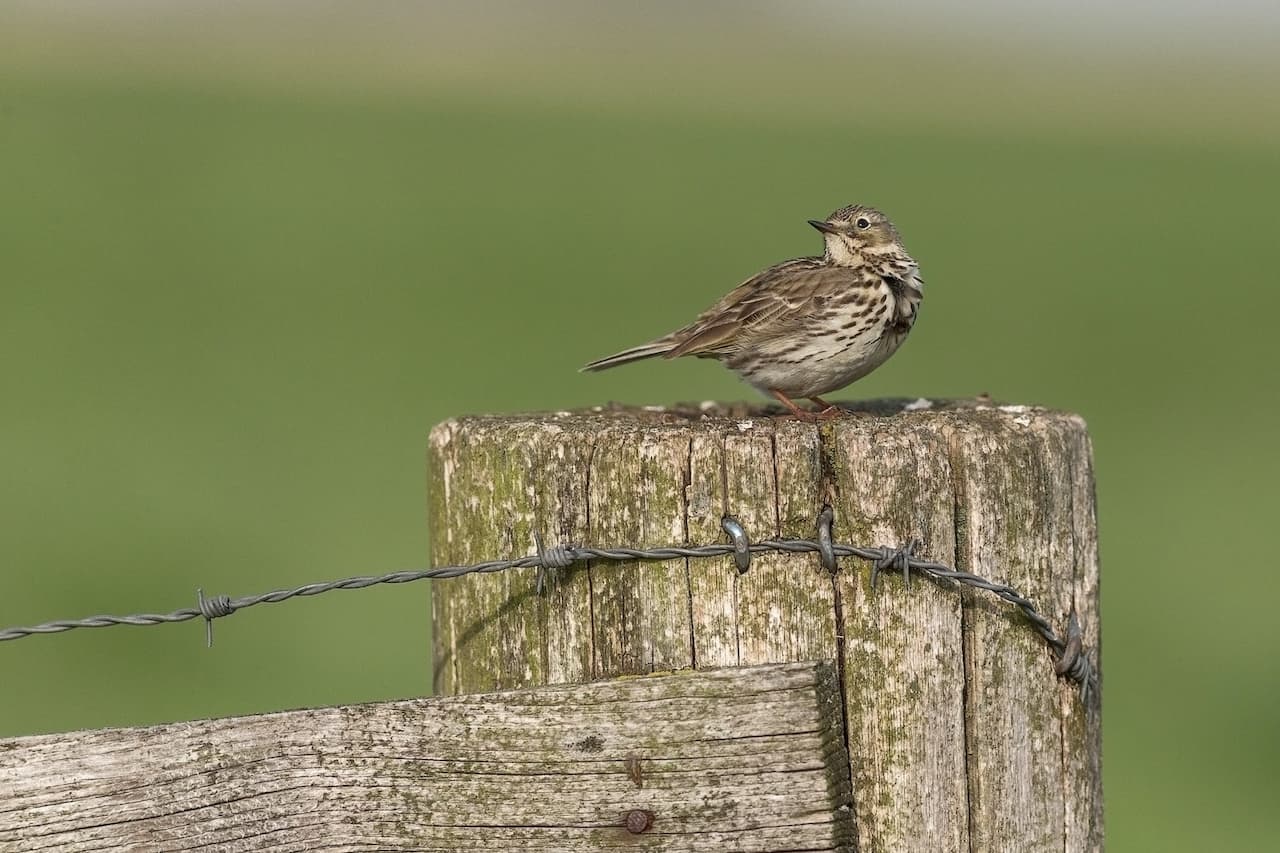Magpie-goose (Anseranas semipalmata)
Magpie-goose (Anseranas semipalmata)
The Magpie Goose, Anseranas semipalmata, is a waterbird species found in coastal northern Australia and savannah in southern New Guinea. It is a unique member of the order Anseriformes, and arranged in a family and genus distinct from all other living waterfowl. The Magpie Goose is a resident breeder in northern Australia and in southern New Guinea.
Other Related Web Resources: Goose Information / Overview … Photos of the Different Goose Species for Identification … Species Index of Geese
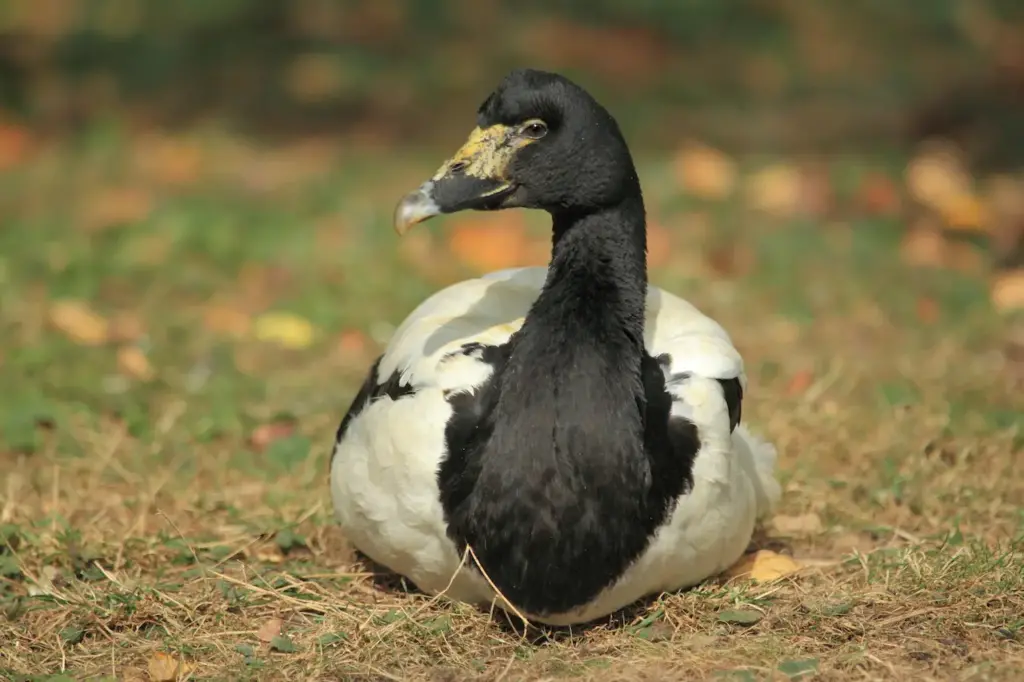
Distribution / Habitat:
The Magpie-goose is a resident breeder in northern Australia, where it is not threatened and has a controlled hunting season when numbers are large, and in southern New Guinea. It is found in a variety of open wet areas such as floodplains and swamps. It is fairly sedentary apart from some movement during the dry season.
Description:
Magpie-geese are unmistakable birds with their black and white plumage and yellowish legs. The feet are only partially webbed, although the Magpie Goose will feed on vegetable matter in the water as well as on land. Males are larger than females.
Unlike true geese, the moult is gradual, and there is no flightless period.
Calls / Vocalizations
The voice is a loud honking.
Breeding / Nesting:
The Magpie Goose is found in a variety of open wetland areas such as floodplains and swamps. It is fairly sedentary apart from some movement during the dry season.
They are colonial breeders and are gregarious outside of the breeding season when they can form large and noisy flocks of up to a few thousand individuals. Its nest is on the ground, and a typical clutch is 5-14 eggs.
Some males mate with two females, all of which raise the young, unlike some other polygamous birds. This may be beneficial when predation of young is high as chicks raised by trios are more likely to survive.
Ecology and status
This species is plentiful across its range. For Australia as a whole, it is not threatened and has a controlled hunting season when numbers are large. However, most of the southern populations were extirpated in the mid-20th century by overhunting and habitat destruction.
The species has been subject to reintroduction projects, and populations have again reached a level where it can be regularly utilized by hunters. In Victoria, the Magpie Goose was listed as near threatened on the 2007 advisory list of threatened vertebrate fauna in Victoria. In the December 2007 Flora and Fauna Guarantee Act list of threatened fauna, it is also listed.
As of early 2008, an Action Statement for the recovery and future management of this species had not been prepared.
Systematics and evolution:
This species is placed in the order Anseriformes, having the characteristic bill structure, but is considered to be distinct from the other species in this taxon. The related and extant families, Anhimidae (screamers) and Anatidae (ducks, geese and swans), contain all the other taxa. The Magpie Goose is contained in the genus Anseranas and family Anseranatidae, which are monotypic in our age.
A cladistic study of the morphology of waterfowl found that the Magpie Goose was an early and distinctive offshoot, diverging after screamers and before all other (ducks, geese and swans.
This family is quite old, having apparently diverged before the Cretaceous–Paleogene mass extinction – the relative Vegavis iaai lived some 68-67 million years ago.
The fossil record is limited, nonetheless. The enigmatic genus Anatalavis (Hornerstown Late Cretaceous or Early Paleocene of New Jersey, USA – London Clay Early Eocene of Walton-on-the-Naze, England) is sometimes considered to be the earliest known anseranatid.
Other Paleogene birds sometimes considered magpie-geese are the genera Geranopsis from the Hordwell Formation Late Eocene to the Early Oligocene of England and Anserpica from the Late Oligocene of Billy-Créchy (France).
The Australian distribution of the living species ties in well with the presumed Gondwanan origin of Anseriformes, but Northern Hemisphere fossils are puzzling. Perhaps the magpie-geese were one of the dominant groups of Paleogene waterfowl, only to become largely extinct later.
Ecology and status
The Magpie Goose is found in a variety of open wetland areas such as floodplains and swamps. It is fairly sedentary apart from some movement during the dry season.
They are colonial breeders and are gregarious outside of the breeding season when they can form large and noisy flocks of up to a few thousand individuals.
Its nest is on the ground, and a typical clutch is 5-14 eggs. Some males mate with two females, all of which raise the young, unlike some other polygamous birds. This may be beneficial when predation of young is high as chicks raised by trios are more likely to survive.
This species is plentiful across its range. For Australia as a whole, it is not threatened and has a controlled hunting season when numbers are large. However, most of the southern populations were extirpated in the mid-20th century by overhunting and habitat destruction.
The species has been subject to reintroduction projects, and populations have again reached a level where it can be regularly utilized by hunters.
In Victoria, the Magpie Goose was listed as near threatened on the 2007 advisory list of threatened vertebrate fauna in Victoria. In the December 2007 Flora and Fauna Guarantee Act list of threatened fauna, it is also listed.
As of early 2008, an Action Statement for the recovery and future management of this species had not been prepared.
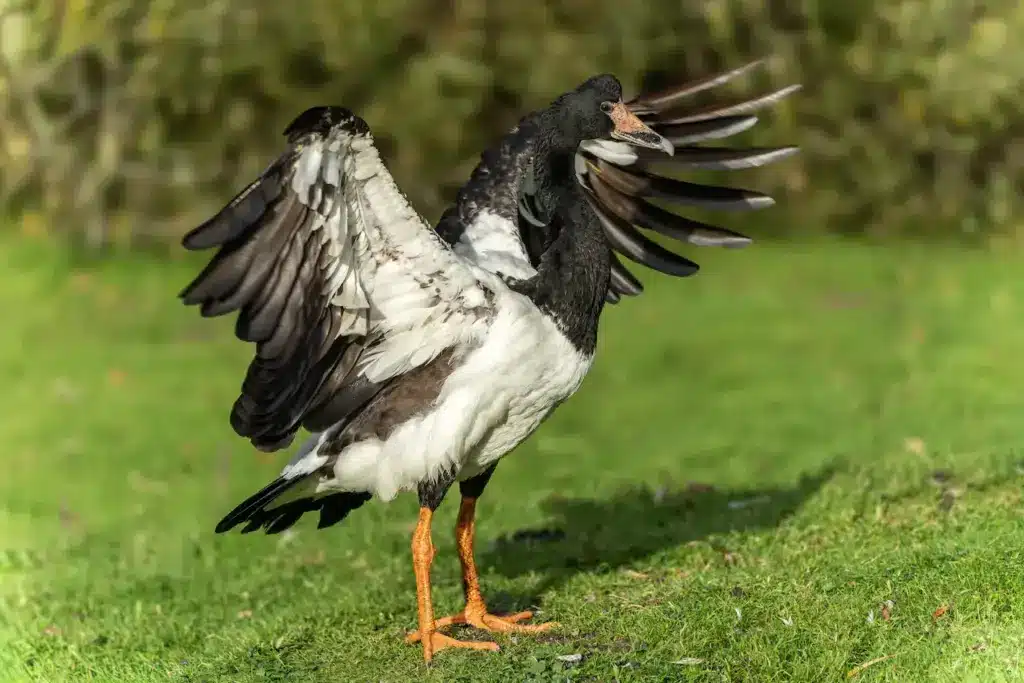
Diet / Feeding:
Ducks and geese generally feed on larvae and pupae usually found under rocks, aquatic animals, plant material, seeds, small fish, snails and crabs.
Feeding Ducks and Geese …
We all enjoy waterfowl and many of us offer them food to encourage them to come over and stay around – and it works! Who doesn’t like an easy meal!
However, the foods that we traditionally feed them at local ponds are utterly unsuitable for them and are likely to cause health problems down the road. Also, there may be local laws against feeding this species of bird – so it’s best to check on that rather than facing consequences at a later stage.
- Foods that can be fed to Ducks, Geese and Swans to survive cold winters and remain healthy when food is scarce in their environment.
Please note that feeding ducks and geese makes them dependent on humans for food, which can result in starvation and possibly death when those feedings stop. If you decide to feed them, please limit the quantity to make sure that they maintain their natural ability to forage for food themselves – providing, of course, that natural food sources are available.

